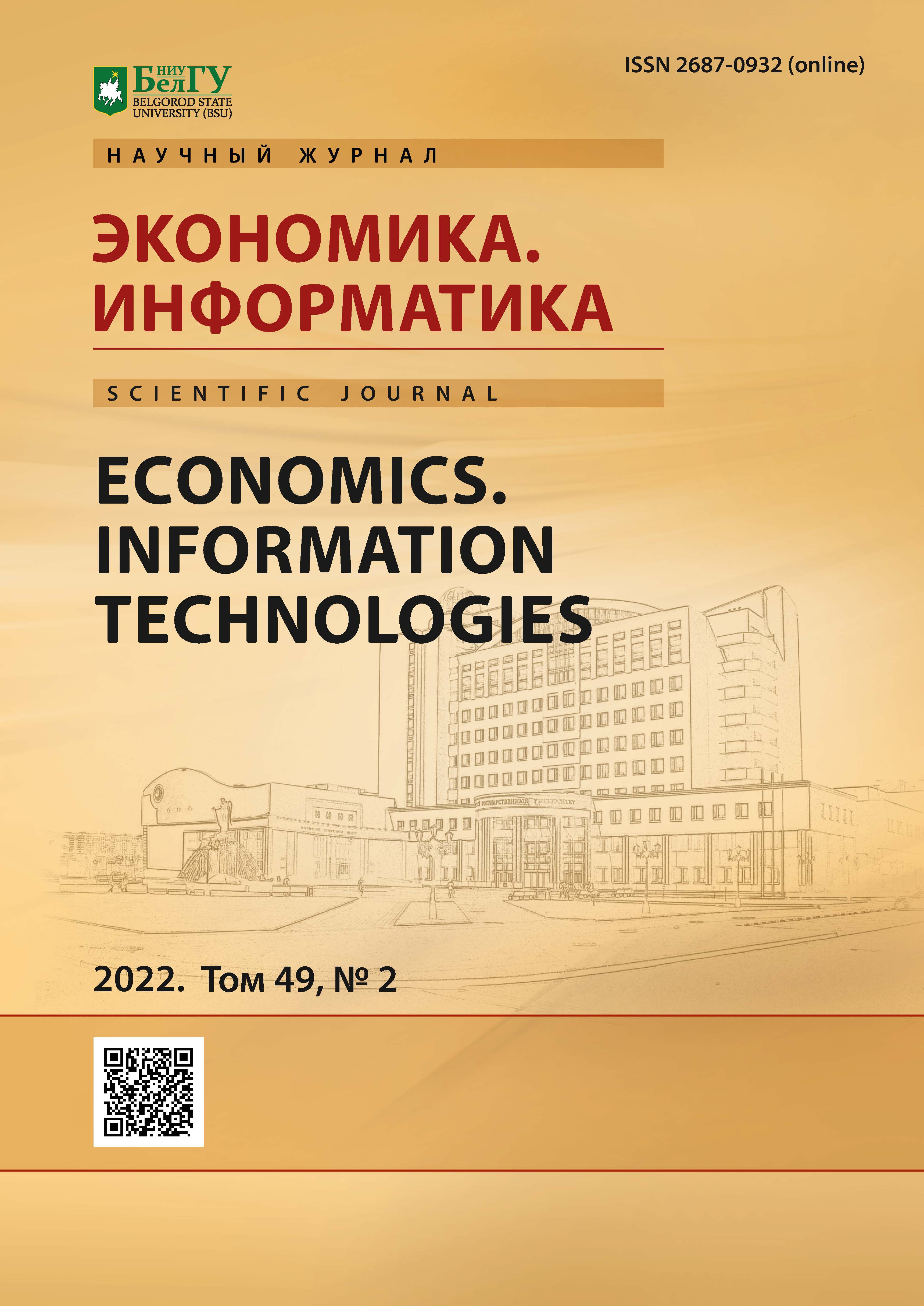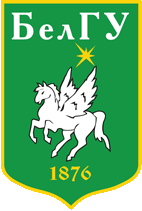Model of Video Streams Transmission in a Flying Ad Hoc Network
DOI:
https://doi.org/10.52575/2687-0932-2022-49-2-403-415Keywords:
flying ad hoc network, video stream transmission model, video broadcast quality assurance, packet loss, bit rate, territory monitoringAbstract
The results of a study on the development of a mathematical model for the transmission of video streams in wireless channels under conditions of high node mobility are presented. The relevance of improving models and algorithms focused on providing video communication based on the use of a flying wireless self-organizing network is substantiated. It is proposed to use redundancy of channel performance in order to increase the load of wireless channels. The necessity of taking into account the high probability of packet loss in a self-organizing network and the specifics of the conditions for the transmission of video information captured by cameras of unmanned aerial vehicles is argued. Analytical expressions are obtained for calculating the values of the bit rate of data transmission over wireless channels, recommended for minimizing failures in broadcasting video streams. It is shown that the model makes it possible to calculate the recommended values of signal transmission power by network nodes, the installation of which on the transmitting modules helps to reduce packet losses. It is concluded that the application of the model makes it possible to provide the required quality of video broadcasting in a flying wireless self-organizing network used to monitor territories during search and rescue operations.
Downloads
References
Абилов А.В., Чунаев А.В., Нистюк А.И., Кайсина И.А. 2020. Модель передачи данных с восстановлением потерянных фрагментов на основе ARQ прикладного уровня. Вестник ИжГТУ имени М. Т. Калашникова, 3(4): 85–94.
Кайсина И.А., Васильев Д.С., Абилов А.В., Мейтис Д.С., Кайсин А.Е., Нистюк А.И. 2019. Сравнительный анализ эффективности ретрансляции потоковых данных в летающей сети. Вестник ИжГТУ имени М.Т. Калашникова, 22(1): 108–115.
Abualhaol I.Y., Matalgah M.M. 2006. Outage probability analysis in a cooperative UAVs network over nakagami-m fading channels. IEEE Conference on Vehicular Technology, 1–4.
Abualhaol I.Y., Matalgah M.M. 2011. Performance analysis of cooperative multi-carrier relay-based UAV networks over generalized fading channels. International Journal of Communication Systems, 24(8): 1049–1064.
Ahmed N., Kanhere S., Jha S. 2011. Link characterization for aerial wireless sensor networks. Globecom Wi-UAV Workshop, 1274–1279.
Albu-Salih A.T., Khudhair H.A. 2021. ASR-FANET: An adaptive SDN-based routing framework for FANET. International Journal of Electrical and Computer Engineering, 11(5): 4403–4412.
Alshabtat A.I., Dong L., Li J., Yang F. 2010. Low latency routing algorithm for unmanned aerial vehicles ad-hoc networks. International Journal of Electrical and Computer Engineering, 6(1): 48–54.
Bocharov P.P., D’Apice C., Pechinkin A.V., Salermo S. 2004. Queueing Theory. Utrecht – Boston, VSP, 445 p.
Da Costa L.A., Pignaton De Freitas E., Kunst R. 2021. Q-FANET: Improved Q-learning based routing protocol for FANETs. Computer Networks, 198: 108379.
De Rango F., Potrino G., Tropea M. 2019. Scalable and ligthway bio-inspired coordination protocol for FANET in precision agriculture applications. Computers & Electrical Engineering, 74: 305–318.
Frid H., Holter H., Jonsson B.L.G. 2015. An Approximate Method for Calculating the Near-Field Mutual Coupling Between Line-of-Sight Antennas on Vehicles. IEEE Transactions on Antennas and Propagation, 63 (9): 4132–4138.
Istikmal, Kurniawan A., Hendrawan. 2017. Selective Route Based on SNR with Cross-Layer Scheme in Wireless Ad Hoc Network. Journal of Computer Networks and Communications, 2017.
Khan I. U., Aziz M. A., Cheema T. A. 2020. Smart IoT control-based nature inspired energy efficient routing protocol for Flying Ad Hoc Network (FANET). IEEE Access, 8: 56371–56378.
Konstantinov I., Polshchykov K., Lazarev S., Polshchykova O. 2017. Mathematical Model of Message Delivery in a Mobile Ad Hoc Network. Proceedings of the 11th International Conference on Application of Information and Communication Technologies (AICT): 10–13.
Kung H.T., Lin C.-K., Lin T.-H., Tarsa S.J., Vlah D. 2010. Measuring diversity on a low-altitude UAV in a ground-to-air wireless 802.11 mesh network. IEEE Globecom Workshops, 1799–1804.
Pandey A., Shukla P.K., Agrawal R., Khare A. 2019. Grasshopper optimization based clustering algorithm (GOCA) for adaptive flying ad-hoc network (FANET) to enhance the quality of service (QoS). International Journal of Scientific and Technology Research, 8(11): 3731–3736.
Polshchykov K., Lazarev S., Zdorovtsov A. 2017. Multimedia Messages Transmission Modeling in a Mobile Ad Hoc Network. Proceedings of the 11th International Conference on Application of Information and Communication Technologies (AICT): 24–27.
Polshchykov K.O., Lazarev S.A., Kiselev V.E., Kiseleva E.D. 2019. Model of real-time flow packet transmission in amobile ad hoc network. Journal of Advanced Research in Dynamical and Control Systems, 11(8): 2861–2864.
Polshchykov K.O., Lazarev S.A., Kiseleva E.D. 2018. Mathematical Model of Multimedia Information Exchange in Real Time Within а Mobile Ad Hoc Network. International Journal of Computer Science and Network Security, 18(6): 20–24.
Polshchykov K., Shabeeb A.H.T., Lazarev S. 2020. Algorithm for receiving the recommended bandwidth of a wireless self-organizing network channel. Periodicals of Engineering and Natural Sciences, 8(3): 1873–1879.
Polshchykov K., Shabeeb A.H.T., Lazarev S., Kiselev V. 2021. Justification for the decision on loading channels of the network of geoecological monitoring of resources of the agroindustrial complex. Periodicals of Engineering and Natural Sciences, 9(3): 781–787.
Prabhu R.S., Daneshrad B. 2010. An energy-efficient water-filling algorithm for OFDM systems. Communications (ICC). 2010 IEEE International Conference: 1–5.
Rohi G., Ofualagba G. 2020. Autonomous monitoring, analysis, and countering of air pollution using environmental drones. Heliyon, 6(1): 1–10.
Samil T., Ilker B. 2015. LODMAC: Location Oriented Directional MAC protocol for FANETs. Computer Networks, 83(4): 76–84.
Shaw J.A. 2013. Radiometry and the Friis transmission equation. American Journal of Physics, 81(1): 33–37.
Abstract views: 280
Share
Published
How to Cite
Issue
Section
Copyright (c) 2022 ECONOMICS. INFORMATION TECHNOLOGIES

This work is licensed under a Creative Commons Attribution 4.0 International License.


